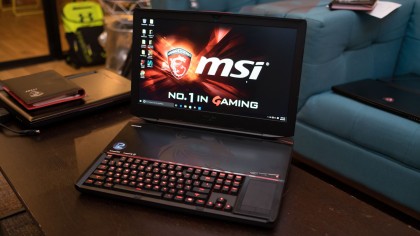
Everything you need to know
Nvidia's Pascal graphics have finally come to gaming laptops and, beyond new model numbers, these next generation GPUs introduce a huge paradigm shift in power. For starters, Nvidia claims the mobile versions of the GTX 1060, 1070 and 1080 will perform at the same level as their desktop counterparts.
The chip maker even goes so far as to call it the full-bore Pascal experience users expect from a gaming PC squeezed into a notebook. Beyond sheer power, there are plenty of other ways these new GPUs will change laptops forever. Join us as we break down everything you need to know about Nvidia's new 10-series for gaming laptops.
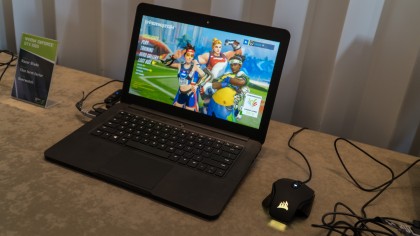
Big things do come in small packages
Nvidia isn't joking about its Pascal chips in laptops being on par with its desktop cards. The mobile version of the Nvidia GTX 1080, for instance, features the same number of cores, utilizes GDDR5X memory and even shares the same boost clock speed of 1,733MHz as its desktop counterpart.
That said, there are some variances to keep in mind. The mobile Nvidia GTX 1070 features 128 more cores, but can only be boosted up to 1,645MHz – compared to the desktop version's 1,683MHz. It's a similar tale with the laptop-grade Nvidia GTX 1060, which runs with the same number of cores but a slower boost clock of 1,670MHz.
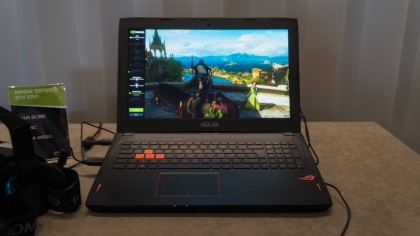
Ultimately, Nvidia promises the performance gap between the mobile and desktop versions to be just 10%. Here are the key specs for each chip:
Nvidia GTX 1080
- 2560 Cuda Cores
- 1,733MHz
- 8GB, 10GBPS GDDR5X RAM
Nvidia GTX 1070
- 2,048 Cuda Cores
- 1,645 MHz
- 8GB, 8GBPS GDDR5 RAM
Nvidia GTX 1060
- 1,280 Cuda Cores
- 1,670MHz
- 6GB, 8GBPS GDDR5 RAM
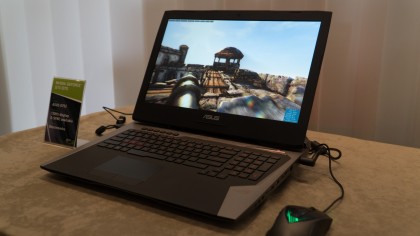
Power to the players
Nvidia's Pascal architecture has already proven itself to be a giant generational leap over Maxwell in the desktop PC world. Now, on the notebook side, the chip maker claims users can expect a 76% increase in performance.
All of this added power translates into several firsts for gaming laptops, including the ability to drive 120Hz screens. 4K gaming will also greatly benefit from the stacked performance bump.
According to Nvidia, it's possible to play the new Mirror's Edge and Tomb Raider at 52 frames per second (fps) with Ultra HD resolutions and high settings – meanwhile, Overwatch can run at an exceedingly silky 89fps.
And, of course, virtual reality experiences will be smoother with Pascal-powered gaming laptops as well simply thanks to the performance bump.
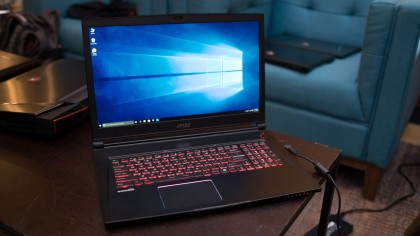
Shaking up the lineup
For years, Nvidia's GPUs have followed a linear succession wherein the GTX 680M was succeeded by the GTX 780M and it by 880M and so on. However, the direct succession of chips is a little different this time around, with the GTX 970M being replaced by the GTX 1060, the GTX 1070 will take the place of the GTX 980M and the GTX 1080 effectively replacing the GTX 980 for notebooks.
As you might have noticed, for the 10-series the company has also officially dropping the M designation since the difference in power between its mobile and desktop chipsets is projected to be marginal. It'll be nice to lug around a gaming laptop free of the stigma of "mobile graphics" to those tournaments.
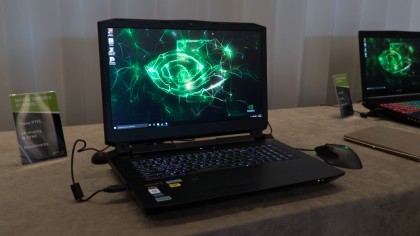
Enhanced overclocking
On top of simply being more capable than Maxwell, Pascal's architecture will allow users to push their hardware that much further. A new Dual-FET power supply design drives more power to the GPU and therefore increases performance.
Nvidia has also improved the multi-phased power controller, which should increase the efficiency of the power supply and ensures more wattage ultimately gets to the graphics chip. From the get-go, the new mobile Pascal parts will also come with factory overclock support.
With all of these improvements put together, Nvidia expects users will be able to achieve a 2GHz overclock on a notebook.
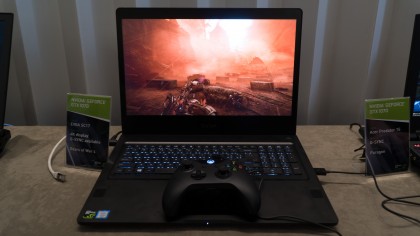
Gaming on battery power
If there's one thing all gaming laptop users know, it's that trying to game with their system unplugged is virtually fruitless – now, Nvidia is trying to change that assumption. Battery Boost has been refined to provide smoother unplugged gameplay, while granting users the choice of whether they need better image quality or longer battery life.
Power efficiency in general is also a big component of Pascal's design, and Nvidia claims the architecture offers 30% longer battery life for gaming laptops.
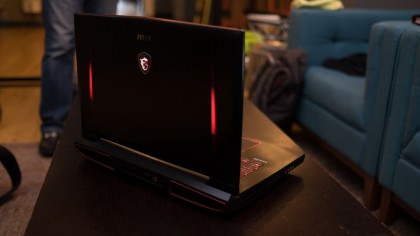
A laptop for every gamer
Perhaps one of the coolest things about Pascal coming to notebooks is that it allows for much thinner and lighter designs. According to Nvidia, a 10-series GPU-powered gaming laptop could potentially be as thin as 18mm (0.71 inches) and weigh only 4 pounds.
That's lighter and thinner than most mainstream 15-inch laptops, and it opens the door to much more portable designs in the future. While we already have the Gigabyte Aero 14 and Razer Blade to sate our need for ultra slim gaming notebooks, we could see even more portable rigs hit the streets in the coming months.
The future of gaming laptops looks bright, and Pascal looks like just the thing we've been needing to take us there.
- Too bad it doesn't look like the new MacBook Pro will be going with Nvidia graphics

Kevin Lee was a former computing reporter at TechRadar. Kevin is now the SEO Updates Editor at IGN based in New York. He handles all of the best of tech buying guides while also dipping his hand in the entertainment and games evergreen content. Kevin has over eight years of experience in the tech and games publications with previous bylines at Polygon, PC World, and more. Outside of work, Kevin is major movie buff of cult and bad films. He also regularly plays flight & space sim and racing games. IRL he's a fan of archery, axe throwing, and board games.